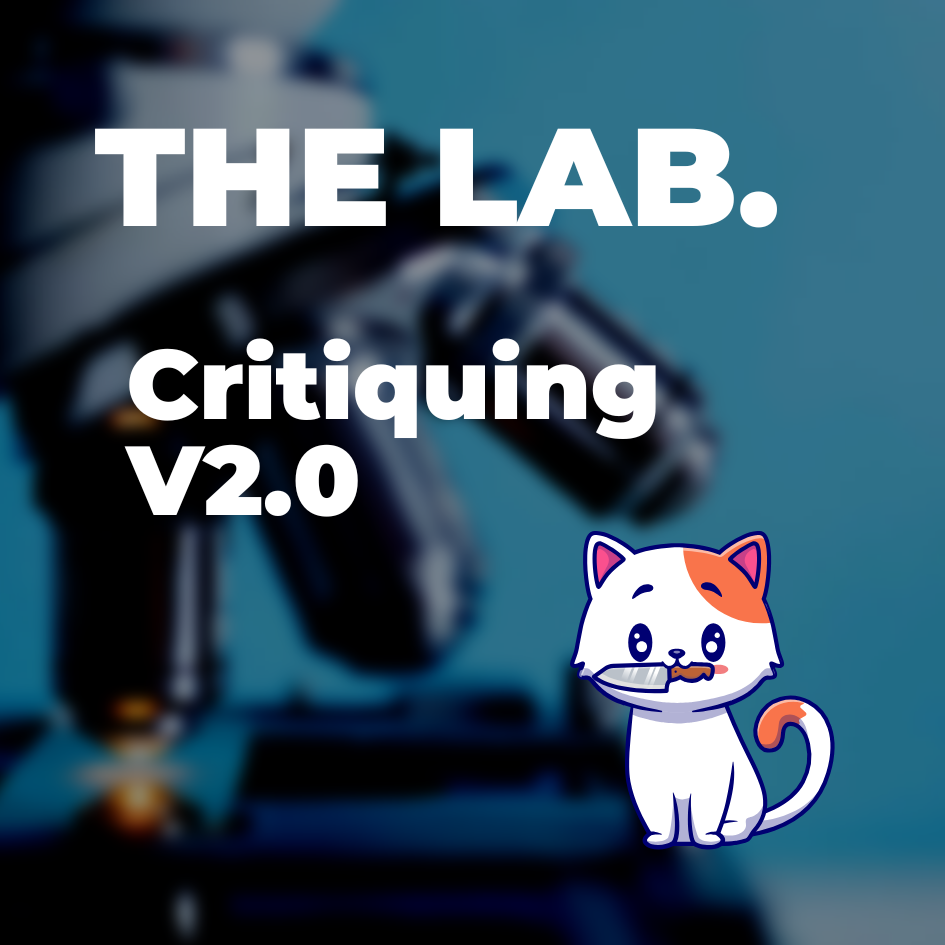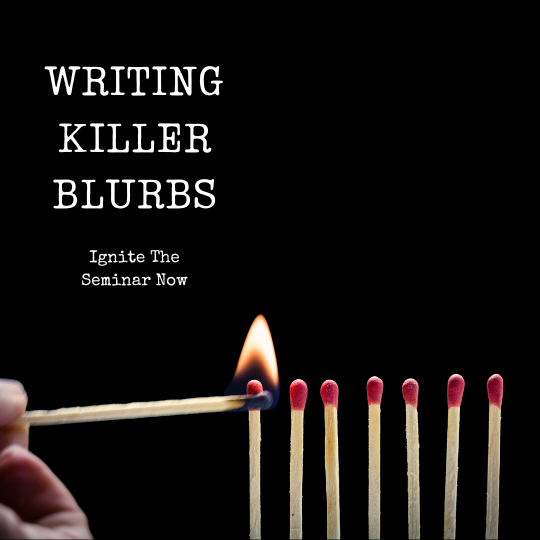In my latest MS, my editor has changed all my times to numbers (e.g. instead of ten o'clock, she's changed it to 10AM). I'm curious how you all write times in your stories, and how you prefer to see them in stories you read. Personally, I haven't got a strong opinion, but I'm quite certain I started writing my times out based on some advice or editing I'd received somewhere along the line. So what do you think? Is it ten o'clock, or 10AM?
Navigation
Install the app
How to install the app on iOS
Follow along with the video below to see how to install our site as a web app on your home screen.
Note: This feature may not be available in some browsers.
More options
Style variation
-
Café Life is the Colony's main hangout, watering hole and meeting point.
This is a place where you'll meet and make writing friends, and indulge in stratospherically-elevated wit or barometrically low humour.
Some Colonists pop in religiously every day before or after work. Others we see here less regularly, but all are equally welcome. Two important grounds rules…
- Don't give offence
- Don't take offence
We now allow political discussion, but strongly suggest it takes place in the Steam Room, which is a private sub-forum within Café Life. It’s only accessible to Full Members.
You can dismiss this notice by clicking the "x" box
You are using an out of date browser. It may not display this or other websites correctly.
You should upgrade or use an alternative browser.
You should upgrade or use an alternative browser.
Presenting time--digits or words?
- Thread starter Robinne Weiss
- Start date
Invest in You. Get Full Membership now.
- Status
- Not open for further replies.
E G Logan
Full Member
Sounds as if your editor may be using a style book such as Associated Press (AP*). That is the big one for the many magazine and newspaper groups that use non-British-English.
Not sure about book publishers generally, but in the UK, OUP, BBC, FT and Economist all go for numbers in text. Not necessarily in the same way, though.
*AP says: "Use figures, except for noon and midnight. Use a colon to separate hours from minutes: 1 a.m., 1 p.m., 3:30 p.m., 9-11 a.m., 9 a.m. to 5 p.m." Also, "The construction 4 o'clock is acceptable, but time listings with a.m. or p.m. are preferred."
BUT in quoted speech in a novel, I would imagine if you want to have a character say: "I'm going to see him at two-thirty/half past two/two o'clock/1400 hours" any of those is probably OK.
Not sure about book publishers generally, but in the UK, OUP, BBC, FT and Economist all go for numbers in text. Not necessarily in the same way, though.
*AP says: "Use figures, except for noon and midnight. Use a colon to separate hours from minutes: 1 a.m., 1 p.m., 3:30 p.m., 9-11 a.m., 9 a.m. to 5 p.m." Also, "The construction 4 o'clock is acceptable, but time listings with a.m. or p.m. are preferred."
BUT in quoted speech in a novel, I would imagine if you want to have a character say: "I'm going to see him at two-thirty/half past two/two o'clock/1400 hours" any of those is probably OK.
Robert M Derry
Colony Member
I think it depends on the publishing house style. I write whatever I feel like at the time. I don't have a preference.
- Thread starter
- #4
Yeah, since I posted this, I've been looking at what different style manuals have to say about it and I've found all sorts of recommendations, some of them contradictory. The one I liked (and will probably use) is to write out times that aren't exact (e.g. The party officially started at eight o'clock, but didn't really get going until after eleven), and to use digits when the time is exact (e.g. He checked his watch--4:35 a.m. Where was she?)Sounds as if your editor may be using a style book such as Associated Press (AP*). That is the big one for the many magazine and newspaper groups that use non-British-English.
Not sure about book publishers generally, but in the UK, OUP, BBC, FT and Economist all go for numbers in text. Not necessarily in the same way, though.
*AP says: "Use figures, except for noon and midnight. Use a colon to separate hours from minutes: 1 a.m., 1 p.m., 3:30 p.m., 9-11 a.m., 9 a.m. to 5 p.m." Also, "The construction 4 o'clock is acceptable, but time listings with a.m. or p.m. are preferred."
BUT in quoted speech in a novel, I would imagine if you want to have a character say: "I'm going to see him at two-thirty/half past two/two o'clock/1400 hours" any of those is probably OK.
And then there are all the guidelines around AM/PM vs am/pm vs a.m./p.m.; whether to use a colon (US) or period/full stop (NZ) between hours and minutes; whether to put a space between the digits and AM/PM or not ... the permutations and possibilities are endless.
C
CageSage
Guest
It usually comes down to the style guide used by the editor - which I generally ignore unless I'm subbing for a particular purpose.
I use the construction that the POV/dialogue character would use. If military, it's 1400 hrs. If not, it might be two o'clock (if it's not clear whether that's morning or afternoon, I'm lacking some setting). If it's written in a document read by a character, it will be based on an editorial style for the writer of the document (even if it's not based on a real company/business/entity).
I use the construction that the POV/dialogue character would use. If military, it's 1400 hrs. If not, it might be two o'clock (if it's not clear whether that's morning or afternoon, I'm lacking some setting). If it's written in a document read by a character, it will be based on an editorial style for the writer of the document (even if it's not based on a real company/business/entity).
Invest in You. Get Full Membership now.
If it's fiction, I would write it out in full, the same with age. I find it odd to see numbers in a story. But then, I'm way past my sell-by date. 
E G Logan
Full Member
I agree entirely. But then, I would. I think we are both editors..?It usually comes down to the style guide used by the editor - which I generally ignore unless I'm subbing for a particular purpose.
I use the construction that the POV/dialogue character would use. If military, it's 1400 hrs. If not, it might be two o'clock (if it's not clear whether that's morning or afternoon, I'm lacking some setting). If it's written in a document read by a character, it will be based on an editorial style for the writer of the document (even if it's not based on a real company/business/entity).
E G Logan
Full Member
In the last analysis, it's a choice. Either choose your own style, or, if in doubt, go for whichever style guide seems to suit you best. (Stylebooks can be unduly prescriptive, though.) Then apply your choice consistently.
But, saying that, I'd avoid anything too idiosyncratic in terms of your own style that might seem eccentric (?irritating ?infuriating) to an agent or publisher and risk putting them off.
But, saying that, I'd avoid anything too idiosyncratic in terms of your own style that might seem eccentric (?irritating ?infuriating) to an agent or publisher and risk putting them off.
If it's fiction, I would write it out in full, the same with age.
I'd do this until an editor requests something different (traditionally), but as you self publish you have the freedom to choose the way you're most comfortable with, you don't have to listen to the editor, something in their background might not mesh with your vision. That's life.
I'd be more inclined to ask your no.1 fans what they prefer.
Last edited:
- Thread starter
- #10
Further to this conversation, I found this: Numbers in Fiction which is a nice, fiction-specific discussion of how to write numbers.
Invest in You. Get Full Membership now.
- Status
- Not open for further replies.
Further Articles from the Author Platform
Café Life Tag Cloud
2025
agent
author
authors
blog
book
books
cafe
calls for submissions
challenge
character
christmas
competition
conferences
contest
creativity
editing
fantasy
fiction
inspiration
life
literature
litopia
love
motivation
music
new
news
novel
philosophy
poetry
prize
publisher
publishing
reading
review
romance
self-publishing
sentence
shakespeare
short story
stories
story
technology
words
world
write
writer
writers
writing
Similar threads
Thought for the Day
I like words. Words are places ...
- Replies
- 2
- Views
- 300
Thought for the Day
Words are so lovable. How could ...
- Replies
- 0
- Views
- 361
- Replies
- 0
- Views
- 983
Thought for the Day
Thoughts are the gun, words are the ...
- Replies
- 0
- Views
- 338
Thought for the Day
My words will either attract....
- Replies
- 0
- Views
- 416
Latest Articles By Litopians
-
Self-Doubt
It sucks, but can it be useful? I think the answer is yes and no. It can be crippling, holding you b ...
-
You’ve Got Your Mother in a Whirl
Inspired by CS Dalton’s recent blog, Baking Day, I’ve been thinking about all the things my moth ...
-
How Interesting Are Your Characters?
The more complex your character is, the more interesting they are. The more interesting your charact ...
-
Gold is a pain in the ass, Part 2
Gold is a pain in the ass, Part 2 Let’s talk about currency in general, for a bit. What does a gol ...
-
Anthologising
Anthologising I’m relatively new to the short story game, having started my middle-aged phase of w ...
-
Gold is a pain in the ass, Part 1
Gold is a pain in the ass, Part 1 So, your heroes have finally overcome all those incredible odds, c ...
-
The Song of Bert and Harry: Sugar
Bert and Harry were walking along Main Street on a wet and miserable morning in late November. Both ...
What Goes Around
Comes Around!



